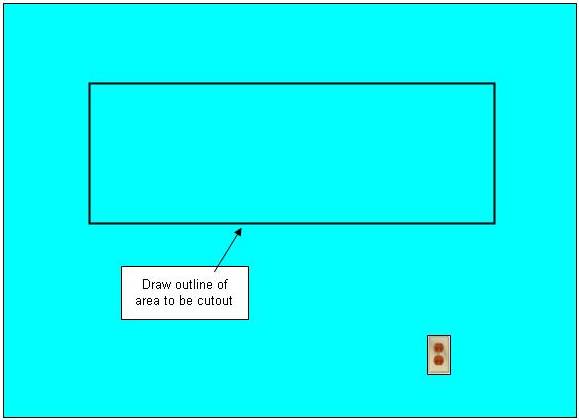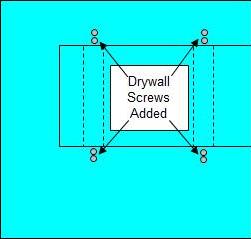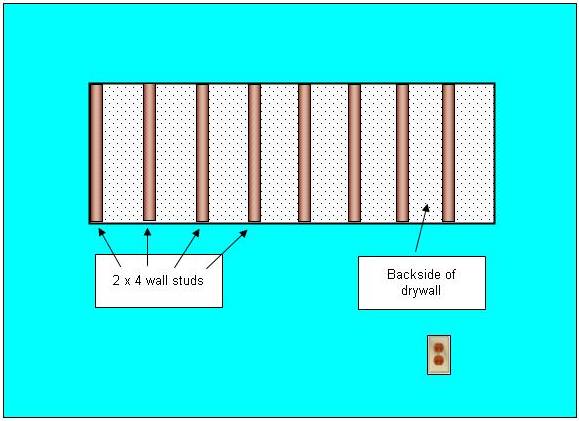Starting Installation:
- Cutting drywall and lumber creates dust and debris. It is best to remove everything that you can from the room and cover cabinets and counters with plastic drop sheets.
- Draw a line on the wall outlining the hole you wish to create, see Figure 4. The outline should be 4 1/2 inches bigger than the finished hole. The 4 1/2 inches allows for 2 new 2 x 4 plates, which will be added on the top and bottom - two new 2 x 4 studs which will be added on both ends and a 5/8 face board on studs and plates all the way around the inside of the opening.
- Using a utility knife or a circular saw, set to 5/8 inch depth, cut along the line on one side of the wall only.
Additional information on demolition

Figure 5a - Laser level
Note: I highly recommend the use of a laser level, as shown in Figure 5a, as measuring from floor or ceiling could lead to an opening that is not square. Laser levels are relatively inexpensive tools and will come in handy on future home improvement projects.

Figure 4 - Draw lines where the kitchen pass through is to be located
Insert two drywall screws into each stud, below the bottom line and above the top line on both sides of the wall, as shown in Figure 5.
This will help to keep the studs from vibrating and kicking back, damaging the drywall, when they are being cut.

Figure 5 - Drywall screws added to protect drywall.
Remove the drywall which will expose the wall studs, as shown in Figure 6.
By only cutting and exposing one side, you have the opportunity to see whether or not there is any hidden wiring or plumbing that must be re-routed before you can continue.

Figure 6 - One side of kitchen pass through drywall removed - exposing studs
If it is necessary to re-route electrical wires - DO NOT make connections that are not in electrical boxes and DO NOT bury electrical boxes inside walls!
Additional information is available on rerouting electrical cables.
